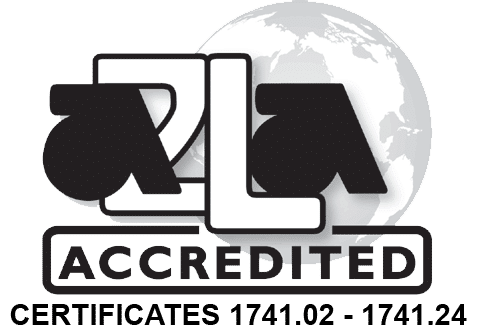Developing a Calibration Program
A written calibration program is a key component in a food safety and quality system. In addition to determining what needs to be calibrated, how often, and by whom, a good calibration program includes steps to be taken if equipment is found out of tolerance. These steps must address both the product potentially impacted by the situation and the process for correcting the situation itself.
Identifying and securing product potentially impacted by a failed calibration check is important. Typically, potentially impacted product includes everything made since the last good check. External calibrations are often performed at large enough intervals that much of that product is probably out of your control. Don’t panic. If you’ve been performing internal verifications between external calibrations, you’ve significantly reduced your risk.
Internal verifications are very similar to external calibrations, but they’re done by your employees and are usually performed at intervals designed to minimize your risk in situations just like this. For example, the precision measurement group at Cross might calibrate the scales used to ensure you meet NIST Handbook 44 weight requirements on packaged product quarterly, but your quality team does a verification at the beginning of every production run and every four hours during production. If a Cross technician finds a scale is out of tolerance, you might be able to limit the product potentially at risk to what was made since the last internal verification.
Before you do that, you’ll want to check on three things: your test weights, your procedure, and the results of the out of tolerance calibration.
- Are your test weights calibrated and are they in tolerance? An internal verification is only as good as the test weights used. You’ll want to make sure that the weights you’ve been using for internal verification are in tolerance. It’s not uncommon for test weights are calibrated less frequently than scales, so it’s worth confirming that you’ve been using good test weights.
- How are your employees performing the internal verification and when were they last trained? It’s a good idea to make sure that employee practices match your written procedures. People who do a task often enough often find ways to do it faster with less effort. If the faster way doesn’t impact the results, it’s probably worth incorporating into your written program. If you see quality suffering because checks are going too quickly, it’s worth the effort to retrain employees. Anyone doing an internal verification should be trained before they first take on the task and on a regular basis thereafter. As with everything else in a food safety and quality system, all training should be documented.
- How out of tolerance was the scale when it was calibrated? The tolerance for calibration is often tighter than your process tolerance, regulatory requirements, or food safety limits. It’s possible that the scale is out of calibration, but by such a small amount that it wouldn’t have caused your product to be outside your specification parameters, regulatory requirements, or food safety limits.
NIST Handbook 44 describes regulatory standards for ensuring stated weights on labels are accurately reflected in your product. This ensures that a 16oz box of dry pasta actually contains about 16oz of dry pasta.
Some ingredients impact the safety or quality of the food or because there are regulatory limits on the allowable amounts of some ingredients. For example, preservatives may be added to food to prevent spoilage, extending its shelf life. If too little is added, the food may spoil prematurely. If too much is added, you may be exceeding regulatory limits.
Net weight and ingredient weights also impact the nutritional value of a product, so you’ll want to confirm that any variations in net weight or ingredients don’t make the nutritional panel out of compliance with regulations.
If you find that product is impacted, you’ll need to determine next steps. This could be as simple as a product hold or as complex and costly as a recall. It’s helpful to state who is responsible for assessing the information available, investigating further if needed, and making a decision about potentially impacted product. There are often too many variables and possible outcomes to list in a single procedure, but explaining who makes the decision is important.
A little research and documentation at this stage can save some headaches down the road. Document your investigation, what you found out, and how you came to your decisions – whether or not product was impacted.
A strong, written calibration program is an important part of any food safety and quality system, but it doesn’t have to be complex. The precision measurement group at Cross can help you build a simple, but robust program that meets regulatory requirements and industry standards, like SQF and BRC. Contact a Cross team member to see how we can benefit your operation.
Want to share or download this article for later reading? Here’s a downloadable PDF copy: Developing a Calibration Program

